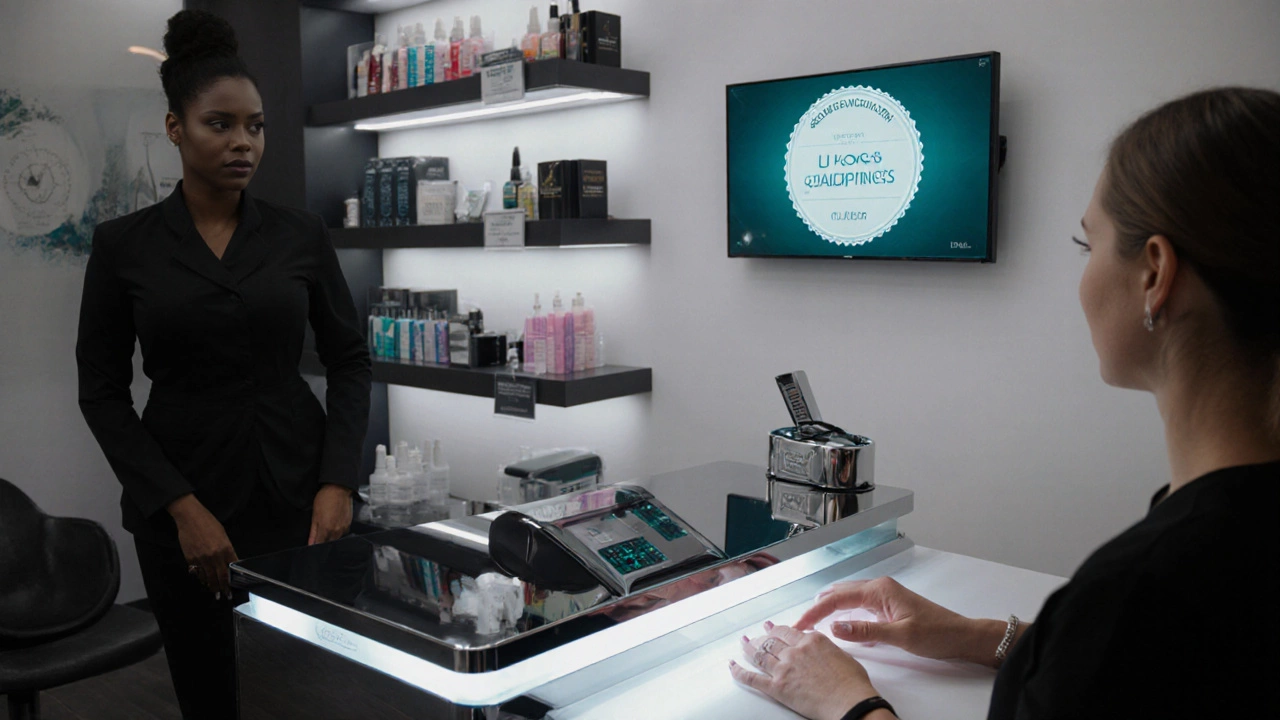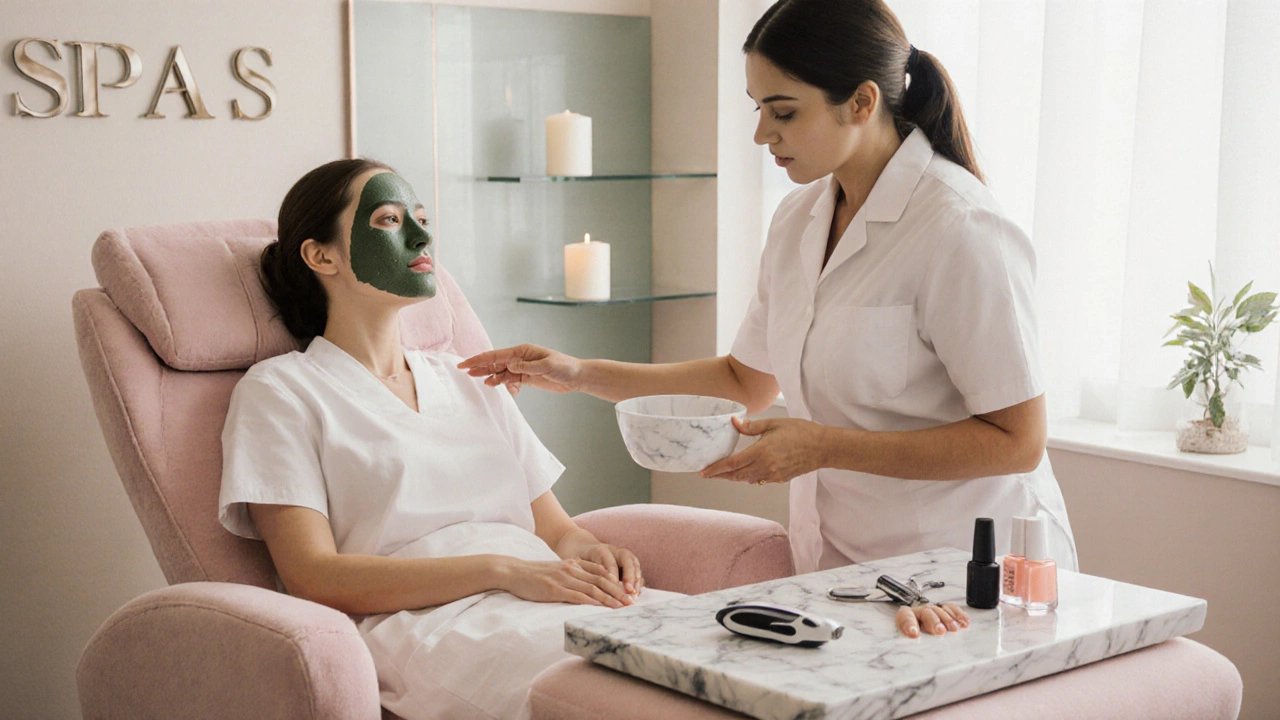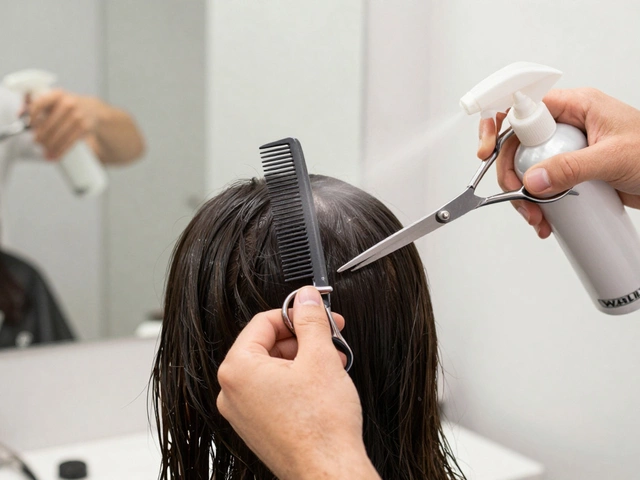Beauty Therapist to Nail Technician Pathway Calculator
Training Time: 0 weeks
Estimated Annual Revenue Increase: £0
Break-even Period: 0 months
Recommendation:
- Required for compliance with UK regulations
- Increases average ticket size by 30-40%
- Additional upfront cost: £1,500-£2,500
- Regulatory complexity for dual qualifications
Wondering whether a beauty therapist nails service is even possible? You’re not alone. Many salon owners and aspiring therapists ask if they can safely add manicures and pedicures to a beauty therapy portfolio. The short answer is yes - but you’ll need the right training, insurance, and compliance with UK regulations. Below we break down the exact steps, the legal hurdles, and the real‑world pros and cons so you can decide if expanding into nails makes sense for you.
What is a Beauty Therapist?
Beauty Therapist is a qualified professional who provides a range of aesthetic treatments such as facials, waxing, massage, and skincare advice. In the UK, most beauty therapists earn an NVQ Level 2 or Level 3 in Beauty Therapy, which is the industry‑standard credential recognised by the Beauty Industry Employers Association (BIEA). The qualification covers anatomy, hygiene, client consultation, and a selection of treatment techniques, but it does not automatically include nail‑specific skills.
Who is a Nail Technician?
Nail Technician is a specialist who performs manicures, pedicures, nail art, and artificial nail applications. Training usually focuses on nail anatomy, product safety, and the latest trends in nail design. Many nail technicians hold a separate NVQ Level 2 in Nail Services, though some courses bundle both beauty therapy and nail work into a single program.

Regulatory Landscape in the UK
Before you start offering nail treatments, you must align with several pieces of legislation:
- Health and Safety at Work Act 1974 - requires you to maintain a safe environment, use approved chemicals, and keep equipment in good condition.
- Cosmetics Regulation (EU) No 1223/2009 - governs the safety of all products applied to the skin, including nail polishes and gels.
- Local council salon licensing - most councils, including Bristol City Council, demand a premises licence and an inspection focused on hygiene and waste disposal.
- British Standards such as BS 8200 - outlines best practice for the provision of beauty and nail services.
Failure to comply can result in fines, closure orders, or personal liability if a client suffers an injury.
Training Paths - How to Get Qualified for Nails
If you already hold a beauty therapy qualification, you have two practical routes to add nail services:
- Enroll in a stand‑alone NVQ Level 2 in Nail Services. These courses typically run for 4‑6 weeks full‑time or 12‑16 weeks part‑time and cover sanitation, gel application, and nail anatomy.
- Choose a combined “Beauty Therapy + Nail Technician” program. Many colleges now bundle the two, awarding a dual NVQ that satisfies both regulatory bodies.
Below is a quick comparison of the two routes:
| Attribute | Beauty Therapy NVQ | Nail Services NVQ |
|---|---|---|
| Core Modules | Facial care, waxing, massage | Manicure, pedicure, gel extensions |
| Assessment Type | Practical + portfolio | Practical + product safety log |
| Typical Duration | 6-12 months (part‑time) | 4-6 weeks (full‑time) or 12 weeks (part‑time) |
| Regulatory Focus | General health & safety, skin hygiene | Chemical safety, nail‑specific sanitation |
| Career Path | Salon therapist, spa therapist | Nail artist, freelance nail tech |
Many students opt for the combined route because it reduces total tuition fees and streamlines the paperwork for a single professional registration.
Insurance and Liability: What You Need to Cover
Offering nail services adds a few extra risk factors - chemicals can cause allergic reactions, and improper cuticle work can lead to infections. You’ll need to update your insurance policy to include:
- Professional indemnity insurance - protects you if a client claims you caused damage or injury during a nail treatment.
- Public liability insurance - covers accidents that happen on the salon floor, such as a client slipping on spilled polish.
- Product liability coverage - essential if you use your own branded nail gels or polishes.
Speak with a broker familiar with the beauty sector; they can tailor a package that satisfies both beauty therapist and nail technician clauses.

Pros and Cons of Adding Nail Services
Here’s a quick checklist to help you weigh the decision:
- Pros
- Higher average ticket size - a combined facial+manicure can bring in 30‑40% more revenue per client.
- Cross‑selling opportunities - clients who come for hair removal often want a polish for a special occasion.
- Competitive edge - few independent salons in Bristol offer a true one‑stop beauty package.
- Cons
- Additional upfront cost - training, equipment, and product inventory can add £1,500‑£2,500.
- Regulatory complexity - you’ll need to keep dual records for health‑and‑safety inspections.
- Time management - nail work can be slower than other treatments, potentially reducing the number of daily appointments.
Step‑by‑Step: Setting Up a Combined Service in Your Salon
- Assess your current space. Allocate a dedicated nail station with proper ventilation; a portable air purifier works well in small rooms.
- Complete the required training. Enroll in either a stand‑alone nail NVQ or a combined program, then obtain the certification.
- Update your insurance. Provide proof of both beauty therapist and nail technician qualifications to your broker.
- Register with your local council. Submit a revised premises licence that lists nail services alongside existing offerings.
- Stock compliant products. Choose EU‑registered nail gels, acetone‑free polish removers, and single‑use cuticle tools to meet the Cosmetics Regulation.
- Develop a pricing strategy. Bundle services (e.g., “Spa Day Package - facial, massage, and gel manicure”) to encourage higher spend.
- Train your staff on cross‑contamination protocols. Use separate towels, disposable files, and clean the manicure table after each client.
- Market the new service. Highlight the dual‑qualification badge on your website and social media - clients trust accredited professionals.
Following these steps keeps you compliant, protects your clients, and positions your salon as a premium destination.
Frequently Asked Questions
Do I need a separate licence to offer nail services?
Yes. While a general salon licence covers many treatments, local councils usually require you to list nail services specifically. The application is an add‑on to your existing premises licence and involves an extra health‑and‑safety inspection focused on chemical storage and ventilation.
Can I use my current beauty therapy qualification to skip nail training?
No. Even though you already understand hygiene and client care, nail work introduces new techniques and chemical risks. Most insurers and councils will ask for proof of a dedicated nail qualification, typically an NVQ Level 2 in Nail Services.
What is the cheapest way to start offering nails?
Look for part‑time evening courses at local colleges; they often cost between £250‑£400. Start with a basic manicure set (about £120) and use a small, well‑ventilated corner of your salon. As revenue grows, reinvest in a gel system and additional training.
Are there any health risks for clients?
Improper use of acrylics or gel UV lamps can cause nail plate damage or skin irritation. That's why the Cosmetics Regulation mandates that all products be labelled with safety data sheets, and why you must follow BS 8200 cleaning protocols after each client.
How much extra income can nail services generate?
A standard gel manicure in Bristol averages £30‑£35. If you book just five extra nail appointments per week, that’s an additional £150‑£175 in gross revenue, translating to roughly £7‑£8k per year after product costs.





Write a comment